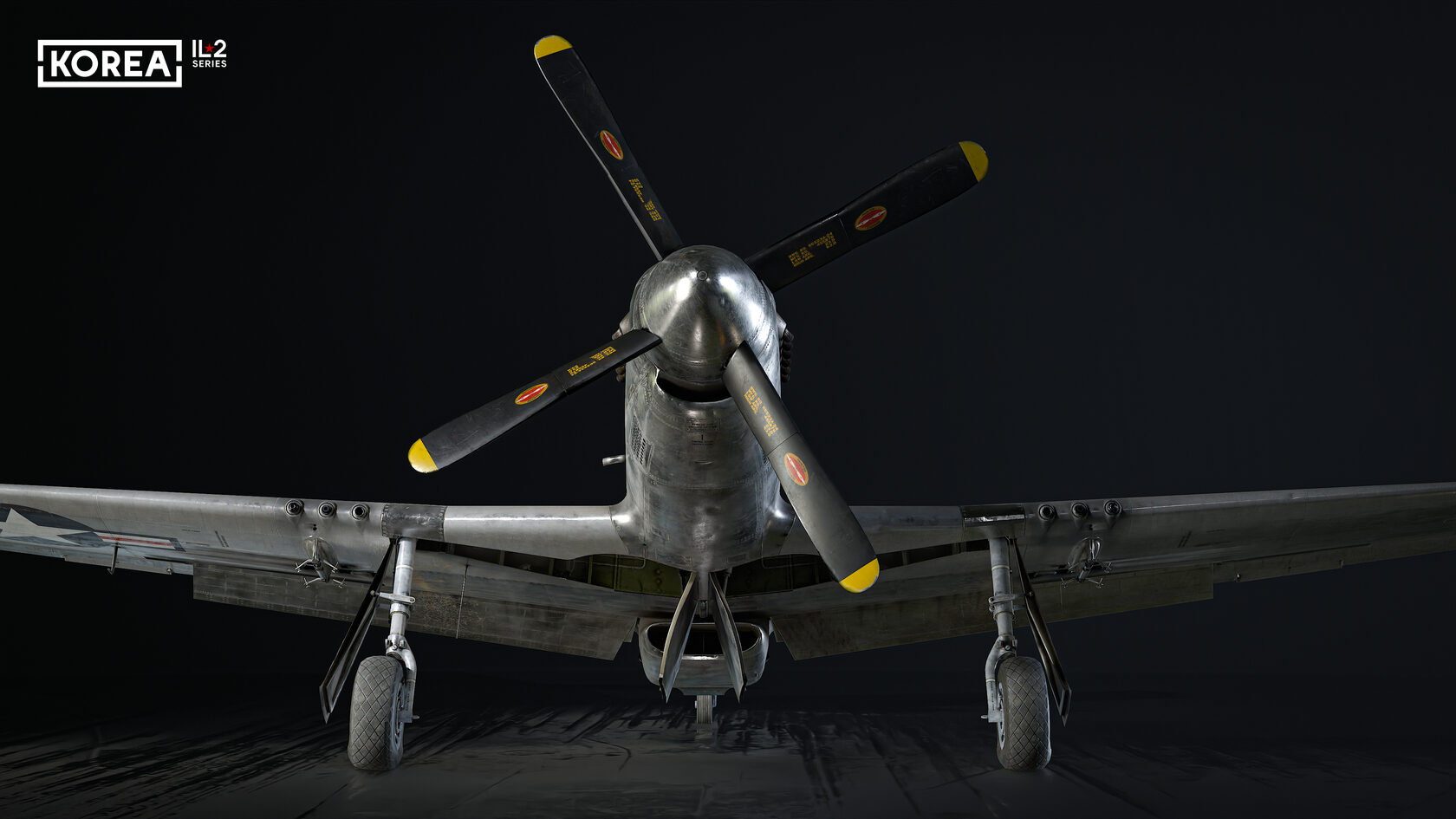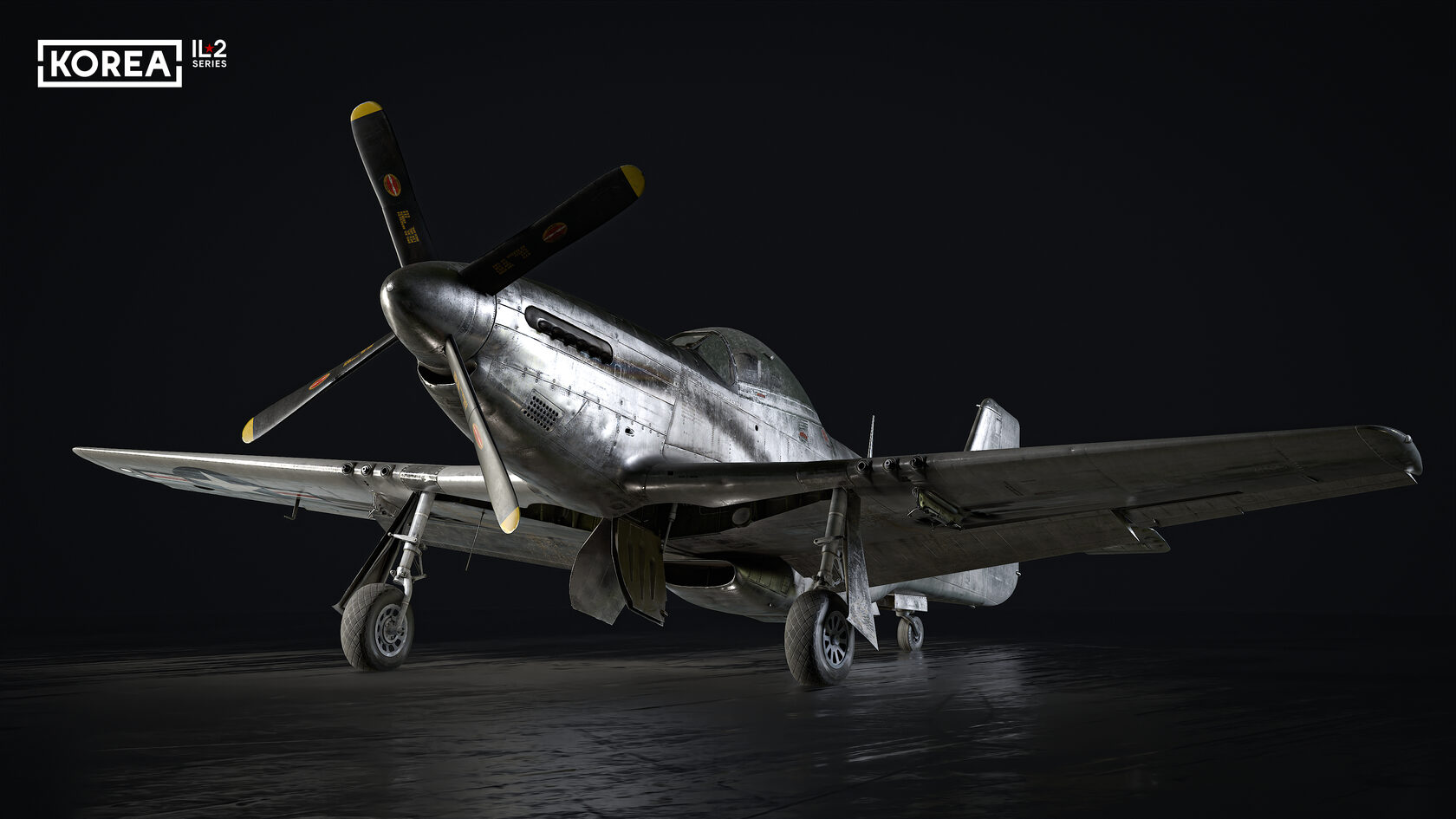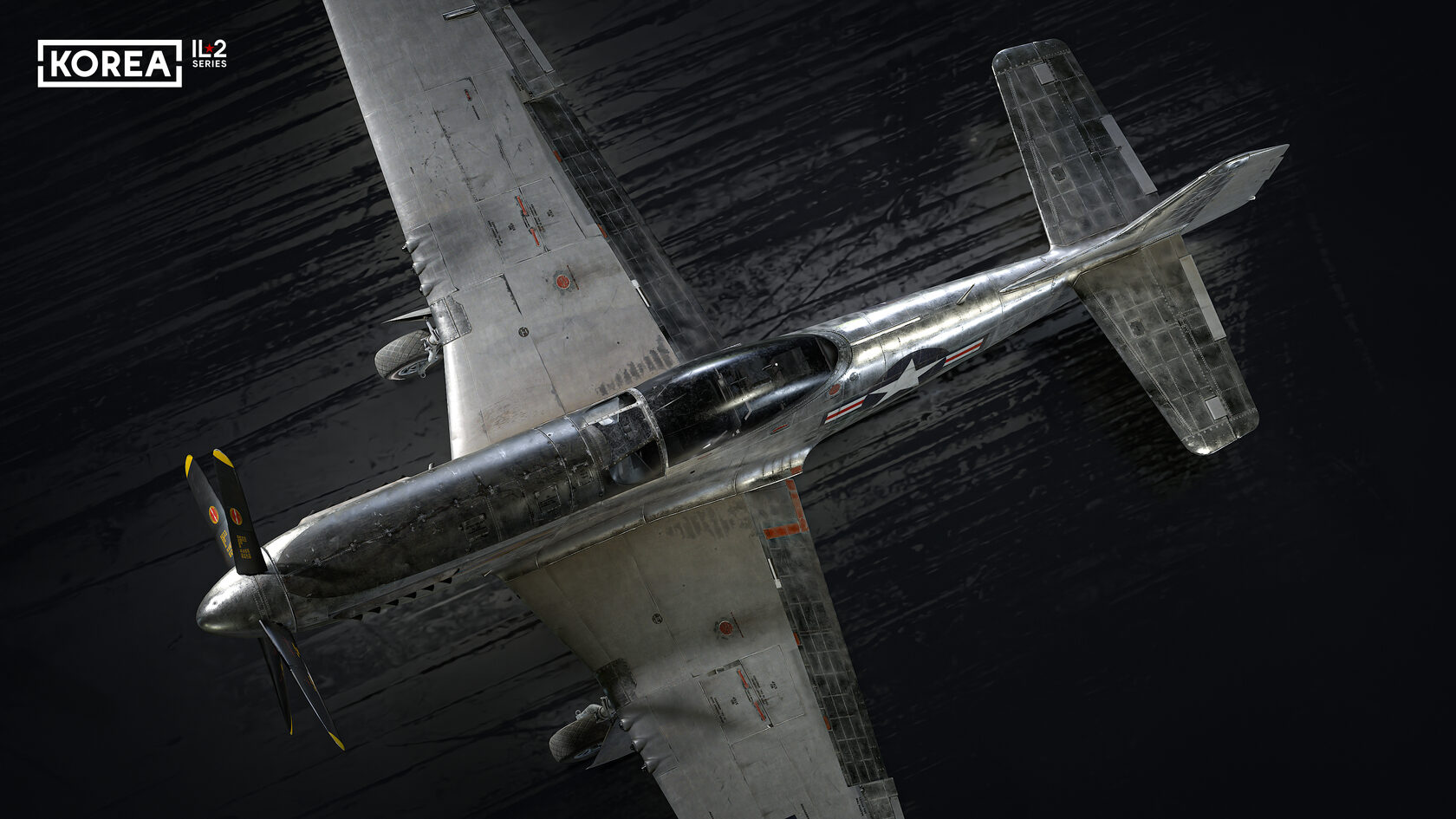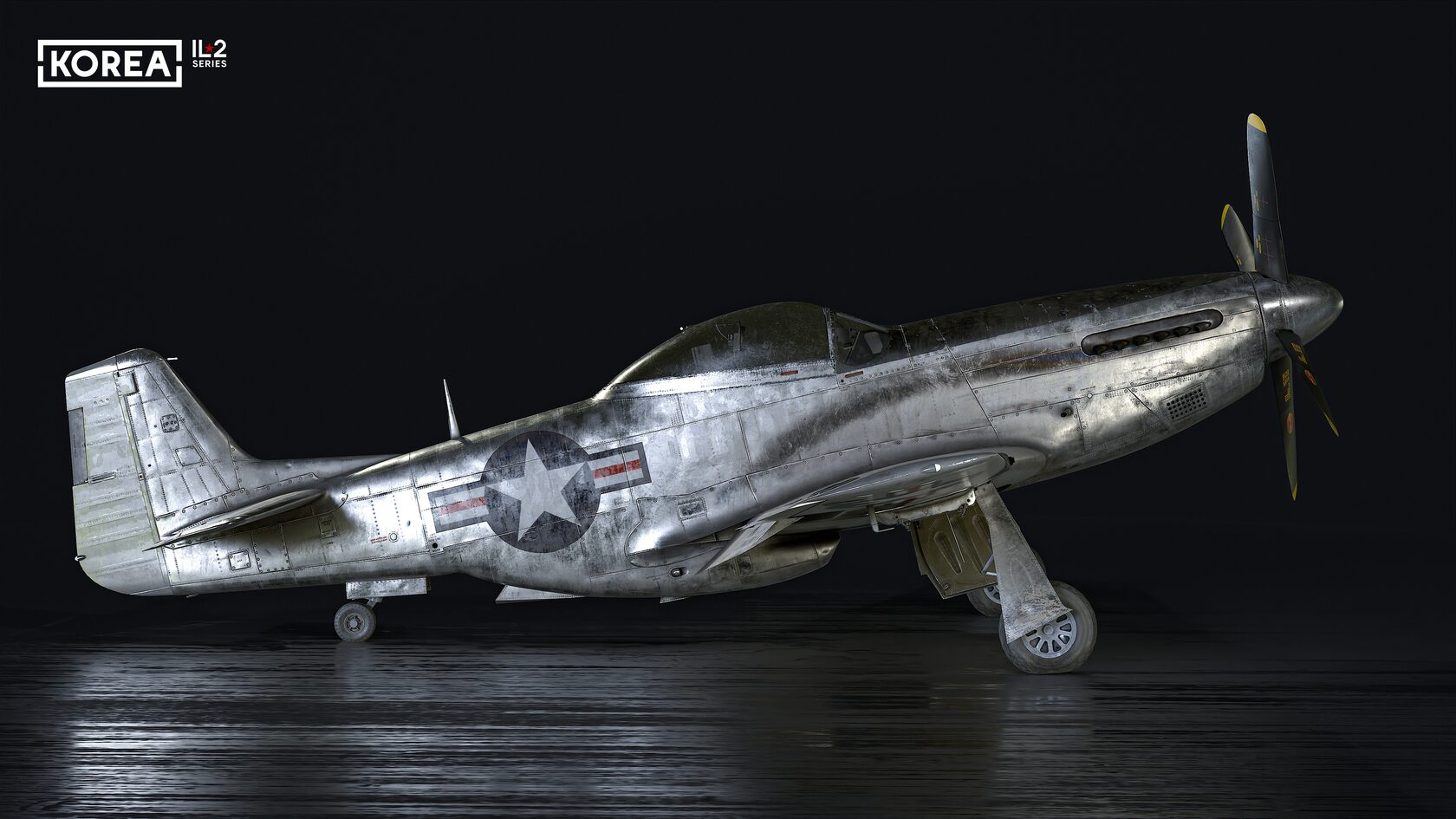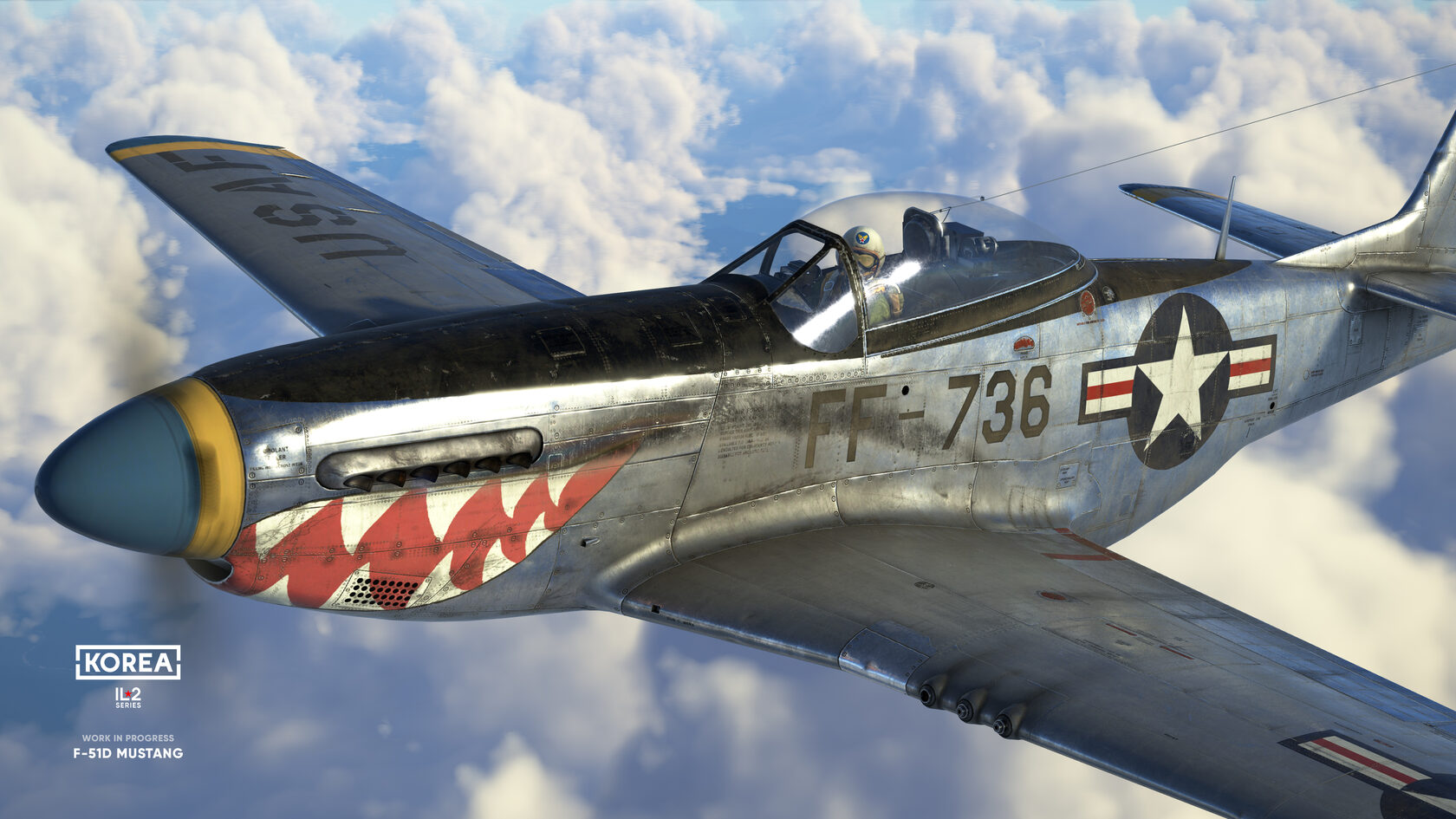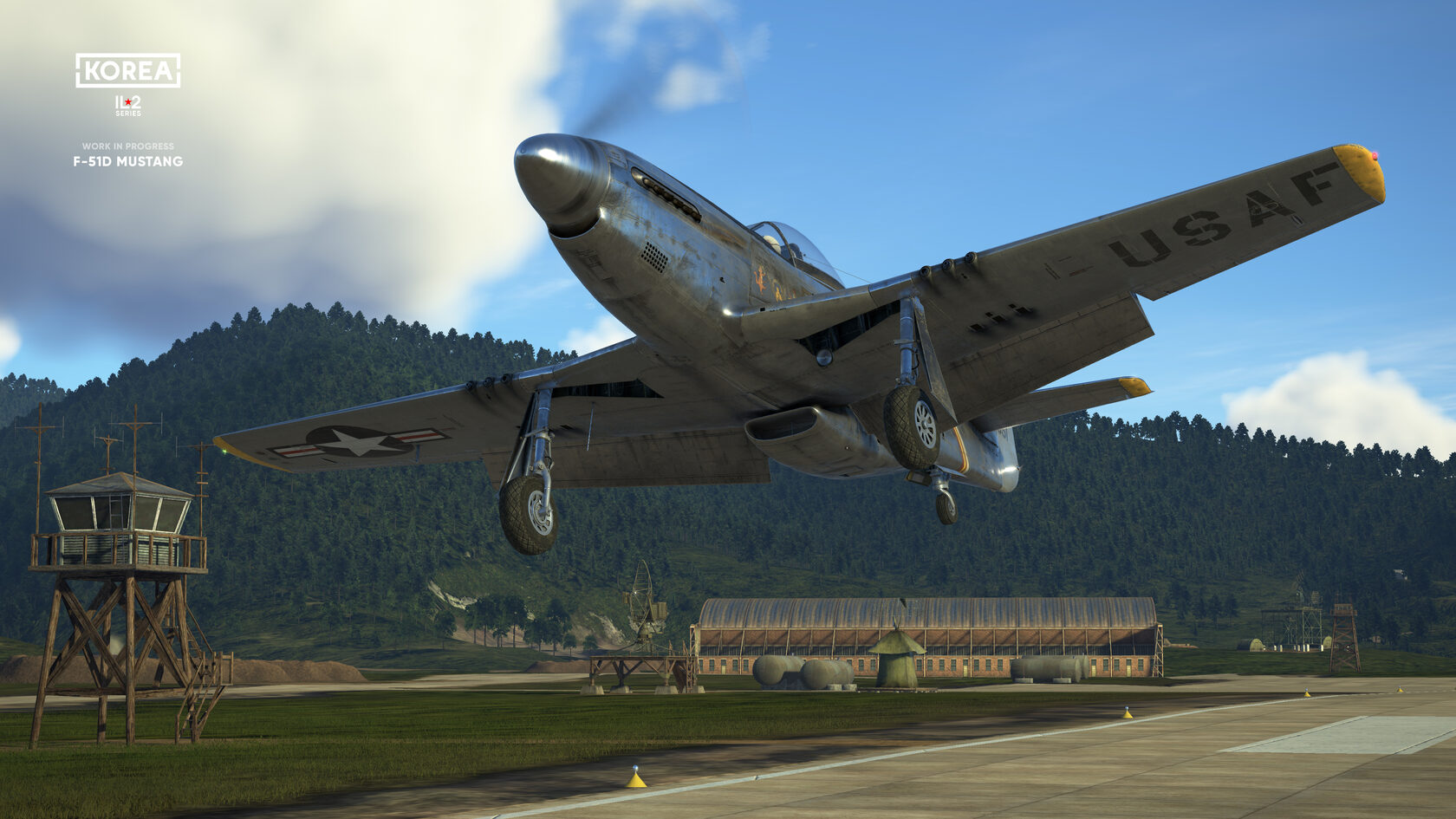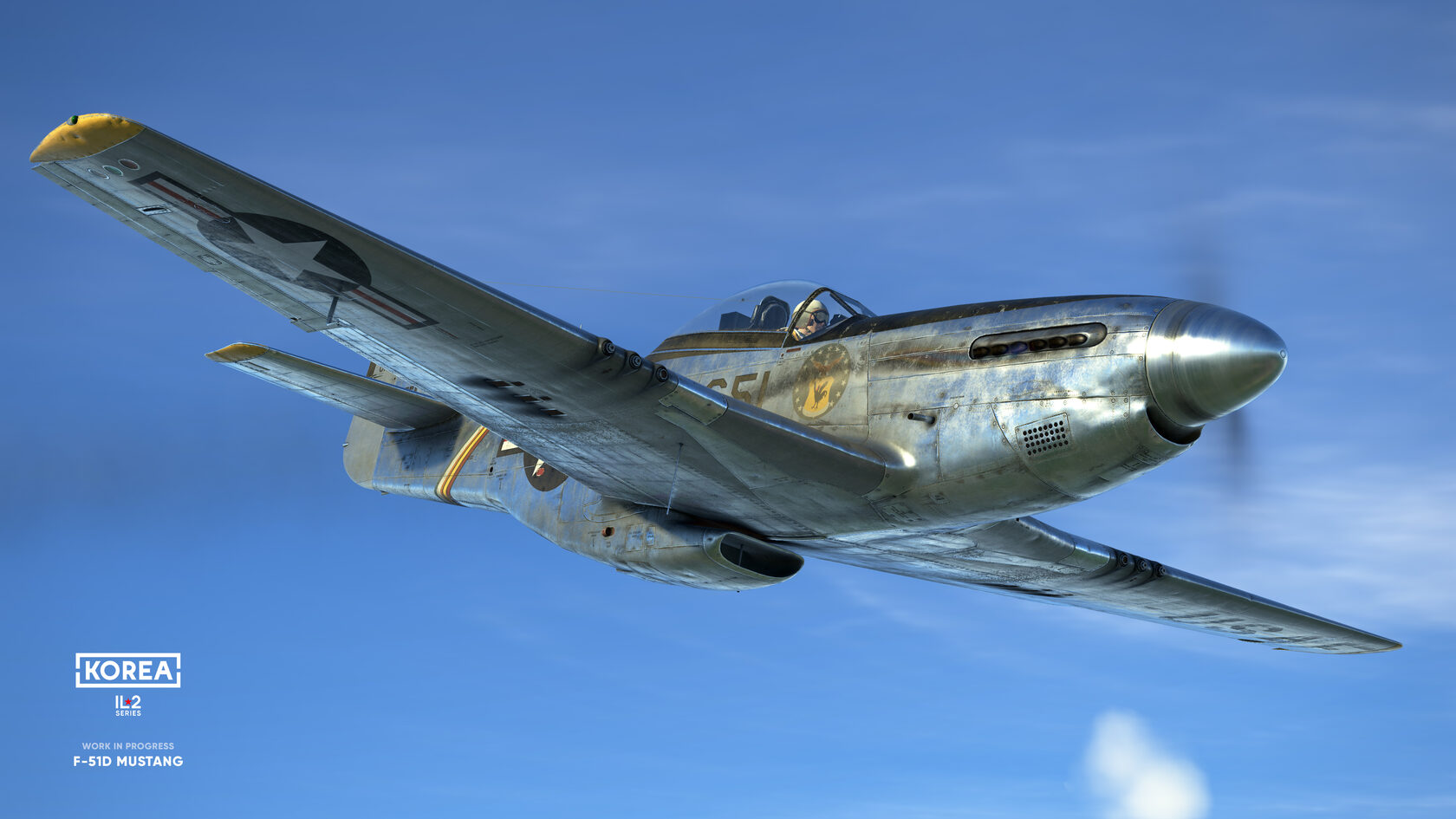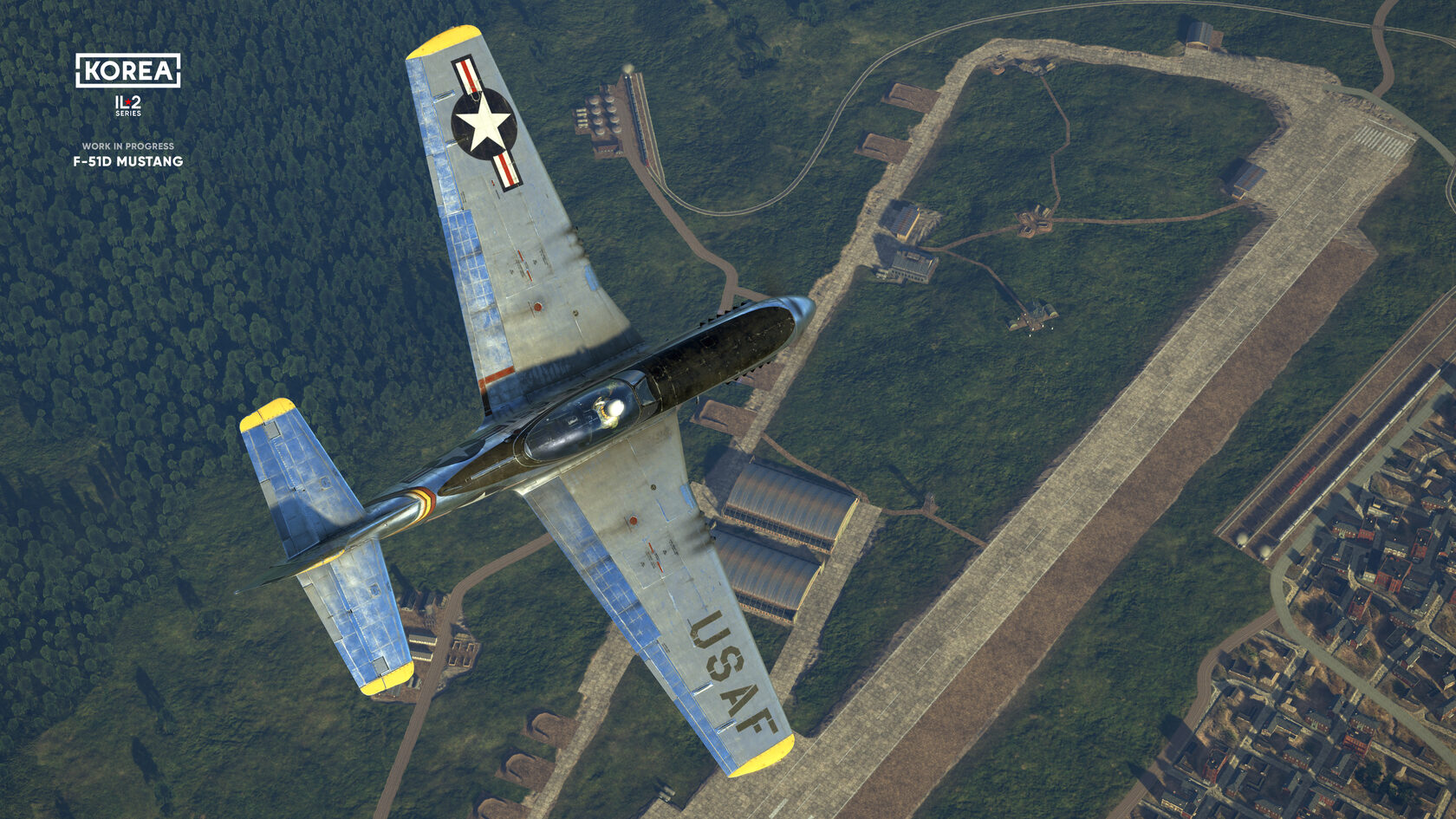Dev Blog #8
Hello everyone!
Our hero of today was already a real veteran at the time of the Korean War — the F-51D Mustang made its first flight in 1940. By the end of WWII, after many upgrades, it was one of the near-perfect fighters, with a powerful propulsion system and a large fuel reserve, which allowed the bomber armadas it covered to penetrate deep into Germany from the end of 1943. By the end of the war, the most advanced modification of the Mustang was the P-51D with a bubble canopy.
After the war, these planes receded into the background, giving way to newer fighters, including jet-powered ones. However, when the Korean War started not so well for the Western forces, many airfields that allowed the operation of jet aircraft were lost, and the introduction of old but still extremely powerful fighters that could operate from primitive airfields turned out to be a good solution to the problem. At that time there were less than 50 Mustangs in Korea, mainly used as training aircraft, so additional ones were brought in from the U.S. Air National Guard. They were loaded onto the decks of aircraft carriers without disassembly and shipped across the Pacific to fight another war.
Our hero of today was already a real veteran at the time of the Korean War — the F-51D Mustang made its first flight in 1940. By the end of WWII, after many upgrades, it was one of the near-perfect fighters, with a powerful propulsion system and a large fuel reserve, which allowed the bomber armadas it covered to penetrate deep into Germany from the end of 1943. By the end of the war, the most advanced modification of the Mustang was the P-51D with a bubble canopy.
After the war, these planes receded into the background, giving way to newer fighters, including jet-powered ones. However, when the Korean War started not so well for the Western forces, many airfields that allowed the operation of jet aircraft were lost, and the introduction of old but still extremely powerful fighters that could operate from primitive airfields turned out to be a good solution to the problem. At that time there were less than 50 Mustangs in Korea, mainly used as training aircraft, so additional ones were brought in from the U.S. Air National Guard. They were loaded onto the decks of aircraft carriers without disassembly and shipped across the Pacific to fight another war.
At the same time, a process was underway to bring the fleet of various P-51 modifications to a common denominator known as the F-51D index. Thus, even though the aircraft were brought to the Korean theater of military operations from different places, the result was a fairly homogeneous fleet of combat planes, which is very important from a logistical point of view for effective air combat operations.
Even though the introduction of Mustangs was a forced measure to "plug the holes" in the combat formations, it provided unforeseen positive opportunities: designed for long-range bomber escort, they could patrol for hours and stay over the front line for long periods to search for targets or provide cover.
In our Korea project, the Mustang is effectively re-created in both its visual 3D model and its physical model — this was necessitated by the changed approaches to 3D content modeling and new principles of aircraft aerodynamic design. The result is a virtual model of this aircraft that has reached a new level in both appearance and behavior in flight and combat.
We’ll be returning to the F-51D in the future, both on the Dev Blog and in the Dev Brief. Please stay tuned for more updates!
We’ll be returning to the F-51D in the future, both on the Dev Blog and in the Dev Brief. Please stay tuned for more updates!



